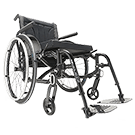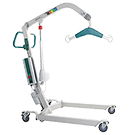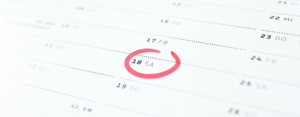
Hospital essentials: the ultimate guide to packing for child
Our hospital packing guide is a simple checklist to help you prepare for your child’s next hospital visit and prevent you running around like headless chook 10 minutes before you need to leave.
Paperwork
To help doctors, nurses, administration staff and other healthcare professionals give your child the best care possible, there’s a lot of paperwork to keep track of their hospital journey.
It can be overwhelming but you may need to complete forms such as:
-
An admission form in the emergency department
-
An outpatient admission form
-
An inpatient admission form (for an overnight stay)
-
A permission form to access or share your health records
-
A consent to treatment form
-
A discharge form
-
A next-of-kin or power of attorney form
If your child’s admission is pre-planned, it’s handy to complete these forms in advance and take them with you on the day.
Documents
Having the right information and documents at hand can help to make an admission as quick and painless as possible. An envelope-style folder or compendium is perfect for keeping everything in one easy-to-access place.
We recommend taking the following documents:
-
Medicare card
-
Private health insurance (if applicable)
-
Healthcare Card (if applicable)
-
Specialist’s letters and referrals
-
X-rays or medical images, test results or reports
If you’re a frequent visitor, it’s a good idea to keep a small notebook in the folder with a list of important information that might be easy to forget in a stressful situation.
You may want to include:
-
Medicare card number
-
Private health insurance member number
-
Centrelink customer reference number
-
Healthcare Card number
-
A list of important phone numbers, including family, your GP, specialist doctors or allied health workers, your workplace and their school or childcare centre.
-
A pen – actually more than one pen – you’ll probably need to take notes
Be careful not to lose it and you’re personal information along with it – that’s the last thing you need.
Medicine
Take along all of your child’s prescription and non-prescription drugs, vitamins, and natural remedies, as well as a complete list of these for the hospital staff.
List medicines they’re allergic to and don’t forget to mention it when you speak to admin and your nurse or doctor.
Equipment
It’s amazing what you can forget when you’re in a rush.
It seems obvious, but pack your child’s glasses, hearing aids, inhaler, crutches, wheelchair, walkers, braces or other equipment you may need. If you use a pram or stroller, it’s a good idea to pack it just in case. It can be a surprisingly useful storage space for paperwork and information pamphlets.
Toiletries
A toiletry bag, including a hairbrush, body wash, shampoo, conditioner, moisturiser, deodorant, toothbrush and toothpaste is a must have. You might want to throw in some lip balm or paw paw cream, a pack of disposable wisp toothbrushes, a face washer and a few hair ties and bobby pins if your child has long hair.
Even if you’re child has been toilet trained for a little while, it’s a good idea to buy a packet of nappies for younger children. They may be uncomfortable using the toilet or they could be drowsy and less mobile to make it to the loo in time to stop an accident. If you don’t use them give them to the hospital for another family.
Plastic shopping bags are essential for storing dirty clothes or getting rid of smelly nappies.
Don’t forget pads or tampons for teenage girls.
Clothes
Pack a set of loose comfortable clothes for every day of a planned stay or just a spare set for an emergency visit.
Loungewear and pyjamas with short or three-quarter-sleeves are a good idea in case your child needs to wear a monitor or have an IV put in. Zip-up hoodies can be handy if it gets cold because they won’t disturb the lines. Avoid jeans and head straight to activewear like leggings and trackies.
Remember to include an ample supply of underwear and comfortable socks – when you think you have enough chuck in another pair each – and of course slippers or thongs.
Last but not least, try keeping clothes colourful or fun. If that means including a tiara or a superhero cape than so be it.
Home Comforts
Packing a few bits and pieces to make the hospital a little less scary and more like home can make a huge difference to your child’s experience.
For babies and toddlers try a dummy, blanket or favourite toy. It’s also helpful to pack a t-shirt or pillowcase with your scent on it for when you can’t stay with them. Encourage bigger kids to grab a book they’ve been hanging out to read, glossy magazines, colour-in book, crossword puzzles or an easily transportable hobby or craft project.
Tuck a few photos in their bag to give comfort when and if they need it.
A tablet, iPod or mobile phone preloaded with favourite songs, movies or meditation recordings, or with radio capability, can also help when boredom or stress strikes.
Treats and Rewards
Little things can help brighten your child’s day. Depending on their condition, you may be able to bring in their favourite snack or sweets as a special treat. You might also want to pack some healthy, non-refrigerated foods for your child to munch on in between meals or instead of their unidentifiable stew. Afterall, growing and healing can be hungry work.
What Not to Bring
Leave jewellery and other expensive items at home. They may get lost or stolen, and it’s likely your child will need to remove them if you are having scans, scopes or surgery,
That being said, it’s a good idea to make sure you take a small amount of cash or a credit card to pay for parking and incidentals – you will probably need, and very much deserve a coffee.
Finished Packing?
Now you’re packed take a few moments for you. Watching your child in the hospital is a hard thing to do and you deserve a break to recharge. De-stress by having a cup of tea or going for a walk.
Think back to the last in-flight safety demonstration you saw and remember you can’t look after someone else if you don’t look after yourself first. Good luck.










